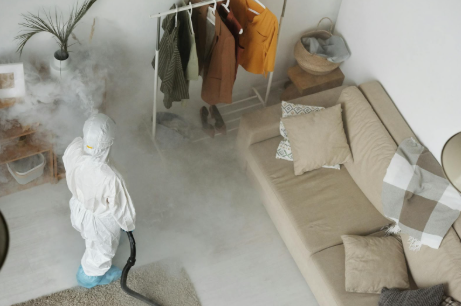No one enjoys dealing with humidity, but if you live in a city like Madison, it becomes part of daily life. The humid continental climate means that while summers may not always be scorching, the air often feels heavy and damp. For homeowners, that humidity can be more than uncomfortable—it can damage your house if ignored. Moisture sneaks into walls, floors, and basements, and before you know it, small issues grow into costly repairs. But you don’t have to suffer, and neither does your home. With the right strategies, you can protect your living space and stay comfortable.
This article shares practical upkeep tips to help you handle humidity head-on and keep your home in top shape year-round.
Preventing Pest Infestation in Humid Conditions
When humidity rises in Madison, it isn’t just people who feel the discomfort. Pests thrive in damp environments, making your home a prime target during muggy months. Ants, roaches, and termites all seek out moisture, and once inside, they can multiply quickly. Prevention starts with reducing the conditions that attract them. Seal small cracks in walls and around windows, fix leaky faucets, and make sure no standing water is left in sinks or basements. Good ventilation also helps since stale, damp air is an open invitation to pests. If an infestation occurs, it’s important to act quickly. Small problems may be managed with traps or natural repellents, but when pests persist or spread, it’s best to call professionals like Alder Pest Control Madison, who have the tools and expertise to eliminate the problem safely and stop it from coming back.
Keep Mold and Mildew Away
Excess humidity often results in mold and mildew. Bathrooms, kitchens, and basements are especially vulnerable because of frequent moisture buildup. Beyond the unpleasant appearance and smell, mold affects air quality and can lead to health concerns if left unchecked. Preventing it requires consistent upkeep. Wipe down damp areas, keep exhaust fans running while cooking or showering, and don’t let wet laundry sit for long periods. A dehumidifier in problem areas can make a noticeable difference by reducing overall moisture levels. For small patches, cleaning with vinegar or specialized products is effective, but once mold spreads beyond what you can safely reach, professional remediation is the right step. Addressing it early protects both your health and your home’s structure.
Protect Wooden Furniture and Flooring
Wood reacts strongly to moisture. In a humid home, furniture and flooring can warp, swell, or crack, leaving lasting damage. Preventing this starts with stable indoor conditions. Air conditioning and dehumidifiers regulate moisture levels and create an environment where wood stays intact. Keeping furniture away from walls that tend to collect condensation or dampness also helps. On top of that, regular maintenance matters. Polishing wooden surfaces with oils or protective coatings doesn’t just enhance their appearance but also guards them against humidity. Flooring benefits from occasional refinishing, which creates a protective barrier. By giving wood the care it needs, you avoid costly repairs and keep your home looking polished.
Maintain Indoor Air Quality with Ventilation
The air inside a home can quickly become heavy and stale when humidity is high. Poor ventilation not only makes the space feel uncomfortable but also creates conditions where allergens and moisture-related damage thrive. The solution is quite simple – improve airflow. Opening windows on dry days gives your home a natural refresh, while vent fans in bathrooms and kitchens help remove damp air at its source. In homes that consistently struggle with stuffiness, whole-house ventilation systems are worth considering. These systems circulate fresh air throughout and prevent moisture from lingering.
Watch Out for Condensation on Windows
Condensation is one of the earliest signs that your home is struggling with excess humidity. While it might look harmless, those tiny water droplets can damage window frames, peel paint, and even encourage mold growth if ignored. To keep it under control, make it a habit to wipe condensation as soon as it appears. That simple step prevents moisture from seeping into cracks. You can also improve insulation around windows, since better insulation reduces the temperature difference that causes condensation. If your windows are older, double-glazed replacements can help stabilize indoor conditions. For ongoing issues, a dehumidifier placed near problem spots often makes a noticeable difference.
Keep Your Basement Dry
Basements naturally collect moisture, and in humid weather, they can feel damp almost all the time. That environment not only feels uncomfortable but also encourages pests, mold, and even structural problems if water seeps into the foundation. A sump pump is a reliable solution if flooding is a concern, and sealing basement walls provides extra protection. Waterproof coatings are another layer of defense that helps keep walls from absorbing moisture. A dehumidifier is often essential in this space, especially during humid summers. If you use your basement for storage or as a living area, staying on top of moisture control makes the space healthier and far more usable.
Living in a humid climate requires attention and care, but it also gives you an opportunity to build better habits as a homeowner. When you learn to manage moisture, you protect not just your property but also the comfort and health of those who live in it. Think of each step as part of a routine that strengthens your home year after year. By staying proactive, you turn humidity from a constant frustration into just another challenge you’re fully prepared to handle.

